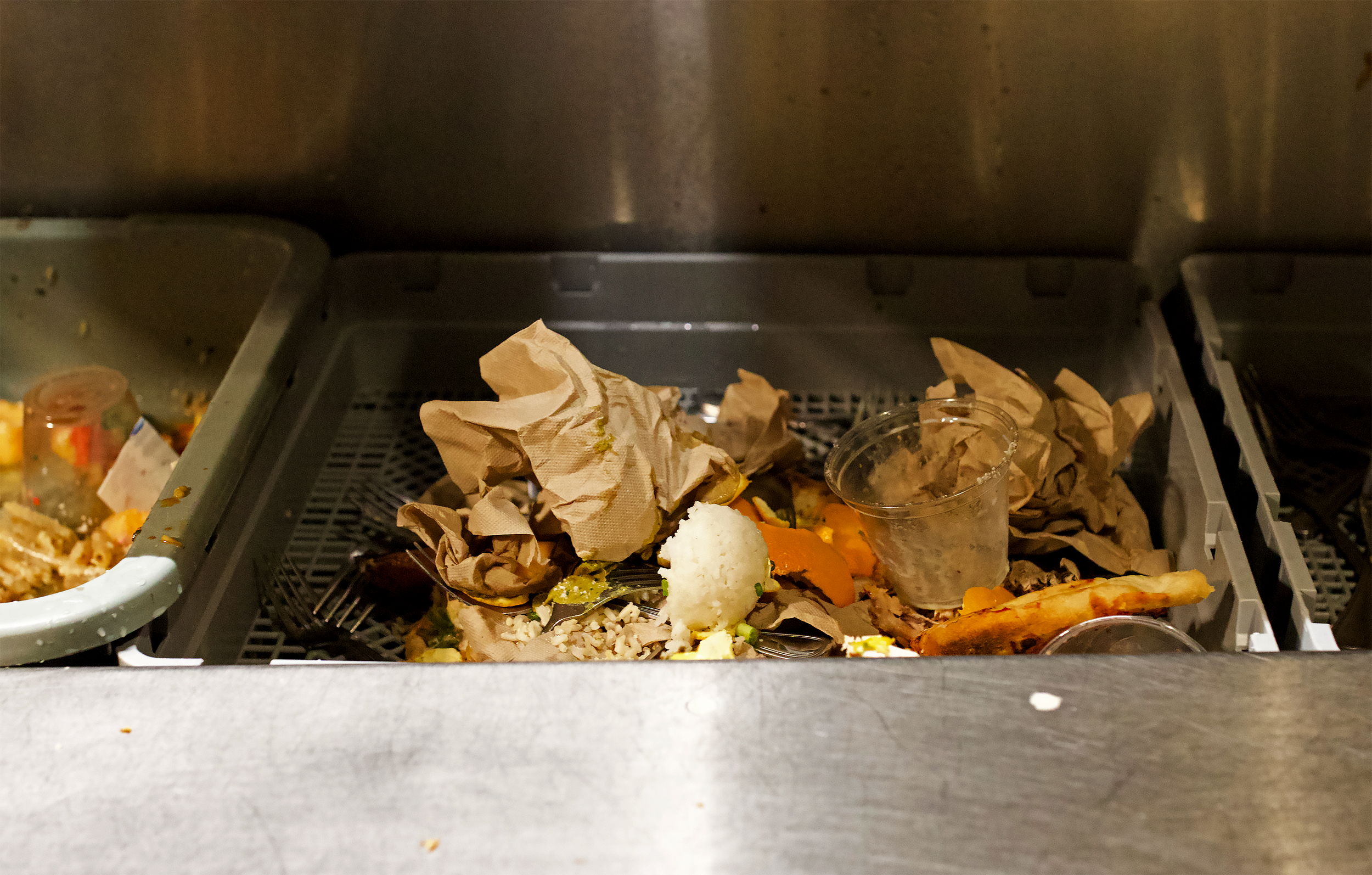Office of Sustainability partners with Sodexo to conduct food waste awareness program on campus
A program put on by the Office of Sustainability, titled “Weigh the Waste,” aims to reduce on-campus food waste by visualizing the amount of food discarded in a single lunch period. Photos by EMILY PARIS, Staff Photographer
The Randall Dining Commons and the Office of Sustainability at Chapman University have partnered together to raise awareness regarding food waste to students and faculty through the implementation of their joint sustainability program, “Weigh the Waste,” which is conducted monthly during the school year.
Created and facilitated by the Office of Sustainability, “Weigh the Waste” operates as an educational program to help assist students and faculty in reducing their amount of everyday waste in the dining hall and around campus.
This program is just one of many environmental programs that on-campus dining services and the Office of Sustainability have implemented — including composting, trayless dining and bulk condiment services — to assist the campus community in identifying and changing their practices and protocols that have resulted in high amounts of food and disposable kitchenware waste.
A “Weigh the Waste” event March 28 revealed that 152.5 pounds of food waste was produced in a single lunch period. A follow-up event April 18 detected 92 pounds of waste.
“I’ve noticed on campus that many students and faculty don’t take into consideration the amount of waste that they’re actively creating every single day,” said Eva Stanton, an environmental science and policy and anthropology double major who has worked as a Student Office Assistant at the Office of Sustainability since last fall. “The Office of Sustainability’s hope is that these initiatives, especially our ‘Weigh the Waste’ program, will help to provide further information to students and faculty about the detrimental effects that food waste has on our community.”
The current “Weigh the Waste” program features trays of uneaten food from students and faculty that are put on display in the Randall Dining Commons for all people who eat there to see a visual representation of the amount of food wasted in a single lunch period. Students and faculty are able to make a guess as to how many pounds they believe all of the waste will weigh before it is professionally weighed.
Randall Dining Commons, located inside the Sandhu Residence and Conference Center, operates daily to provide meals, beverages and snacks to students and faculty on campus. The cafeteria has multiple different food stations set up around the building — including a salad bar, dessert station, five different entree sections and a vegan station — where people dining in the cafeteria can serve themselves buffet-style.
While the buffet style allows many perks to students and faculty on what they decide to eat, it doesn’t help to limit the amount of food that they’re eating. Many students at the cafeteria will take more food back to their table than they actually end up eating, contributing to larger amounts of food being wasted.
“I usually only take the amount of food that I know I’ll eat, so I’ve been able to reduce my amount of waste, but I have definitely seen people throw away mountains of food that they took but weren’t able to finish eating. It’s the benefit and curse of having a buffet-like dining hall. Sometimes, people’s eyes are bigger than their stomachs.”
The dining hall allows students and faculty members with a meal pass to eat an unlimited amount of meals in one sitting. Within several places on campus, such as Argyros Forum and the Starbucks at Beckman Hall, food waste has also been accumulating drastically, where many trash cans are overfilled to the brim with uneaten food and other non-compostable items.
“From seeing people in the cafeteria throw away full plates of food, I do think more should be done to limit food waste on campus, because it doesn’t seem that students are very aware or care about this issue much,” said junior psychology major Anna Mills, who eats at the cafeteria about twice a week. “Allowing students to bring tupperware for their leftover food or putting up educational posters about food waste around the cafeteria could help make students think twice about taking more food than they can actually eat.”
The Office of Sustainability’s “Weigh the Waste” results from March 28 totaled 152.5 pounds of food waste from just one lunch period. Another “Weigh the Waste” day was recently conducted April 18 as one of the Office of Sustainability’s Earth Week events, which ended up totaling 92 pounds.
The program officially began back in 2014 as a way to educate students more on food waste as well as quantify the changes in food wasted over time. Since then, the Office of Sustainability has continued to implement new sustainability initiatives and provide further outreach opportunities to the campus community to raise awareness regarding food waste.
Office of Sustainability Director Quote
What the Office of Sustainability is hoping to achieve through this weight the waste program and other things happening at the cafeteria in terms of sustainability (more info from sustainability manager)
The Office of Sustainability will continue to conduct further “Weigh the Waste” events at the Randall Dining Commons in fall 2022 to work toward reducing food waste on campus.


